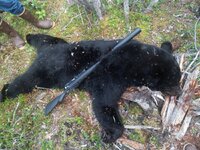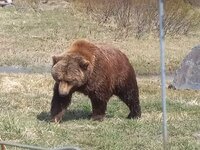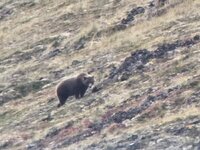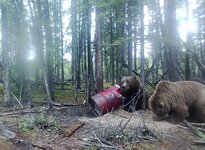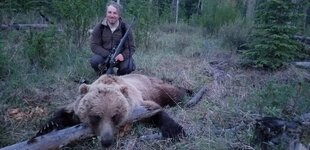Form I don't disagree but I think the assumption that "stopping" a charge equals killing the animal instantly is an absolute worst case scenario. Lots of bears get hit and break off a charge. So hitting the bear enough to hurt it, with any rifle is useful. That would explain why lots of people have used 9mm and 10mm to stop bears. Sometimes there are CNS hits, often the bear gets hurt enough it quits. As far as "breaking them down" goes I'm not a fan. I've seen multiple bears run with 3 legs and lining up to break both shoulders at once is probably harder than a CNS hit. My only interest in bones is whether they stop a bullet that would have hit the vitals if it had continued on. Once we get that must penetration more is probably not worth the trade off. Hence my interest in a .308. If at 308/6.4 CM can reliably kill elk, including through the shoulders, and the wound channels are impressive why go bigger?
I guess I could look at a .223 eventually but I have a .308 that will probably be suppressed so it works fine. But regardless, I was never a serious AR15 shooter so I might do better with a bolt action that I'm used too. I guess a better question would be. Under what circumstances would a .308/6.5 with match bullets give up something to a bigger caliber with premiums? If those 308 match bullets reliably break shoulder bones I don't really know what else we need. Maybe after I try that I'll take the next step an try an AR.
I did think about setting up an AR15 as a backup rifle for ME. Our hunts with kids usually involve me carrying a rifle, getting the kid into position and handing them the rifle. That rifle is going to be either a suppressed 6.5 Grendel or my .308 (suppressed to if we get our second can). So I have the longer and heavier rifle in my hands. A compact AR that straps to my pack would be handy in case I need to help out.
I guess I could look at a .223 eventually but I have a .308 that will probably be suppressed so it works fine. But regardless, I was never a serious AR15 shooter so I might do better with a bolt action that I'm used too. I guess a better question would be. Under what circumstances would a .308/6.5 with match bullets give up something to a bigger caliber with premiums? If those 308 match bullets reliably break shoulder bones I don't really know what else we need. Maybe after I try that I'll take the next step an try an AR.
I did think about setting up an AR15 as a backup rifle for ME. Our hunts with kids usually involve me carrying a rifle, getting the kid into position and handing them the rifle. That rifle is going to be either a suppressed 6.5 Grendel or my .308 (suppressed to if we get our second can). So I have the longer and heavier rifle in my hands. A compact AR that straps to my pack would be handy in case I need to help out.



